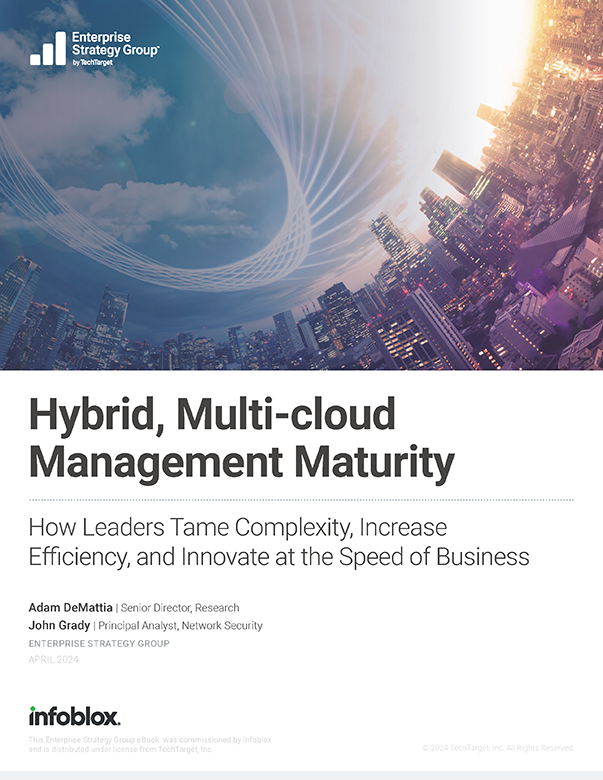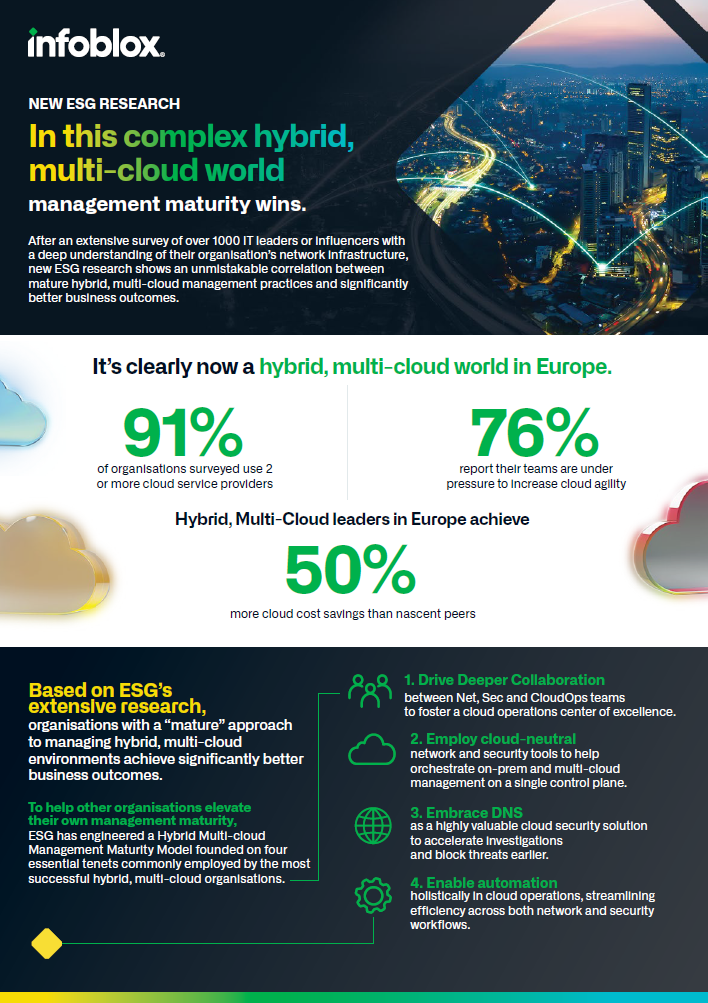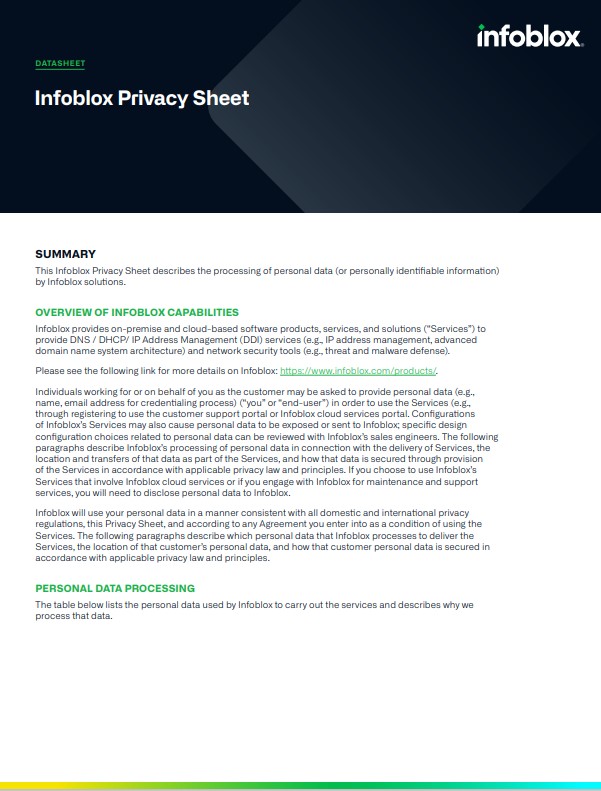Resources
This comprehensive collection of information and illustrative resources provides a full overview of Infoblox’s array of network control solutions.
Filter by:
{{ products_label }}
- {{ term.label }}
{{ solutions_label }}
- {{ term.label }}
{{ industries_label }}
- {{ term.label }}
{{ resource_types_label }}
- {{ term.label }}
Sort by:
{{ sort_label }}
- Date
- Title
Streamline SecOps with Infoblox Ecosystem Integrations: Extending Visibility and Threat Detection to QRadar
Watch now to learn how Infoblox Ecosystem integrations can simplify your security operations, break down silos, and provide early threat visibility across on-premises, hybrid, and multi-cloud environments.Webinar
New ESG Research: In This Complex Hybrid, Multi-cloud World Management Maturity Wins – EMEA
After an extensive survey of over 1000 IT leaders or influencers with a deep understanding of their organization’s network infrastructure, new ESG research shows an unmistakable correlation between mature hybrid,…Infographic
The State of Hybrid Multi-Cloud Management Maturity in Europe
Watch this webinar to learn more about why organizations in EMEA with the most mature hybrid, multi-cloud management processes achieve measurably better business outcomes.Webinar
Role of DNS in Addressing Australia’s Security of Critical Infrastructure (SOCI) Act
The Australian Security of Critical Infrastructure Act, enacted in 2018, designates certain sectors as critical infrastructure due to their vital importance to the nation’s economy, security and societal structure.Solution Note
Infoblox Privacy Sheet
This Infoblox Privacy Sheet describes the processing of personal data (or personally identifiable information) by Infoblox solutions.Datasheet
The State of Hybrid, Multi-cloud Management Maturity in Europe
In this new ESG research report, learn why organizations in EMEA with the most mature hybrid, multi-cloud management processes achieve measurably better business outcomes.Analyst Report
Improve SecOps Efficiency with Infoblox SOC Insights
Discover how SOC Insights from Infoblox helps SecOps teams focus on the most critical threats faster. Rather than sifting through a mountain of security alerts every day, SecOps teams can…Videos
SANS 2024 SOC Survey: Facing Top Challenges in Security Operations
As we’ve seen in the past, security operations centers (SOCs) are a core component of an organization’s cybersecurity practice. We’re exploring what a SOC is, and hope that you use…Analyst Report
Infoblox Leverages Domain Name System for Detection and Response and Threat Intelligence
Infoblox leverages the domain name system (DNS) to enhance cybersecurity through detection and response (DR) and threat intelligence.Analyst Report
Mastering Multi-Cloud: How Maturity Drives APAC Business and Technical Outcomes
Join this webinar to learn more about the results organizations with a mature approach to managing hybrid multi-cloud operations are achieving and what they are doing to lead the way.Webinar
The Big Ruse
Join Infoblox Threat Intel as they discuss groundbreaking research into Chinese organized crime, focusing on the recent unmasking of threat actor Vigorish ViperWebinar















